Wahoo Elemnt Bolt vs Roam: a cycling computer head to head
Which Wahoo Elemnt bike computer is best for you?
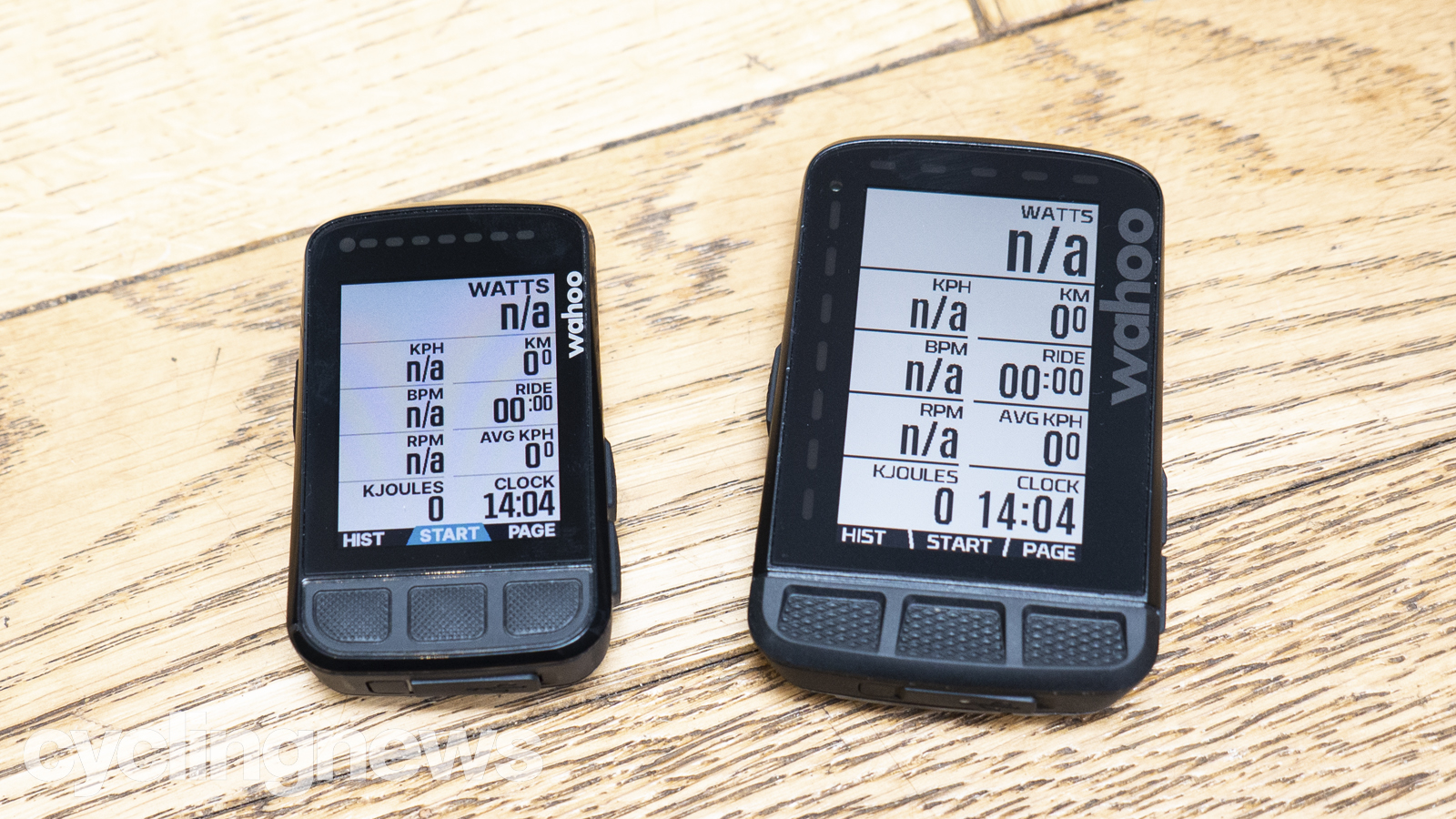
Since its inception in 2010, Wahoo Fitness has fast grown into a recognised and well-respected brand. Its story began when founder and CEO Chip Hawkins engineered his own ANT+ dongle and, since then, it has grown to manufacture cycling computers, turbo trainers, smartwatches, peripheral sensors and more.
In 2015, the Wahoo launched the Elemnt, its first cycling computer and, in 2017, it was followed by the smaller, aerodynamic Elemnt Bolt. They both quickly earned a reputation as some of the best cycling computers on the market and, between them, led Wahoo's charge in the cycling computer space, helping to steal market share from segment leaders Garmin.
In 2019, the original Elemnt was replaced by the even more popular Elemnt Roam, which integrated a colour screen, on-device routing, and more. Today marks the launch of the new Elemnt Bolt and with it comes USB-C charging, an inbuilt accelerometer, and a screen with eight times as much colour as the Roam.
With colour screens, on-device navigation, and extremely intuitive user interfaces, the Elemnt Roam and new Bolt are incredibly feature-rich, simple to navigate and easy to live with, but which of the two is the best?
The new Elemnt Bolt arrived at Cyclingnews HQ just last week and we've been pitting Bolt vs Roam in a Wahoo showdown, comparing everything from their physical form and display quality to the battery life and GPS performance to establish which unit really is the better cycling computer.
Physical dimensions
| Header Cell - Column 0 | Elemnt Bolt | Elemnt Roam |
|---|---|---|
| Weight | 69g | 95g |
| Screen size | 2.2in (56mm) | 2.7in (66mm) |
| Overall dimensions | 77 x 47 x 21mm | 89 x 54.4 x 17.8mm |
Given both Elemnt computers share the same user interface and companion app, it's in their physical form where the majority of differences occur. Both share the same aerodynamic leading edge, and both come complete with an aerodynamic out-front mount which is size-specific to blend seamlessly with the computer it comes with, but the Elemnt Roam is a larger overall package.
Overall, the Elemnt Roam is longer by 12mm, wider by 7.4mm and 3mm deeper. The result is a screen that is 11mm larger, at 6.7cm compared to the Bolt's 5.6cm, measured corner to corner. Unsurprisingly, therefore, the overall weight of the Elemnt Roam is also greater, weighing in at 26 grams more.
Get The Leadout Newsletter
The latest race content, interviews, features, reviews and expert buying guides, direct to your inbox!
Whether or not bigger is better, will be determined entirely by your preferences and your usual riding habits. If you regularly use the on-device map and want a slightly larger area to display your navigation, the Elemnt Roam may be the more attractive option. However, if you hold value in a reduction in weight and aerodynamic drag, then the Elemnt Bolt may be the preferred choice.
Verdict: There are no winners or losers here, the better option for you will depend purely on your needs.
Display
| Header Cell - Column 0 | Elemnt Bolt | Elemnt Roam |
|---|---|---|
| Resolution | 240 x 320px | 240 x 400px |
| Colours | 64 | 8 |
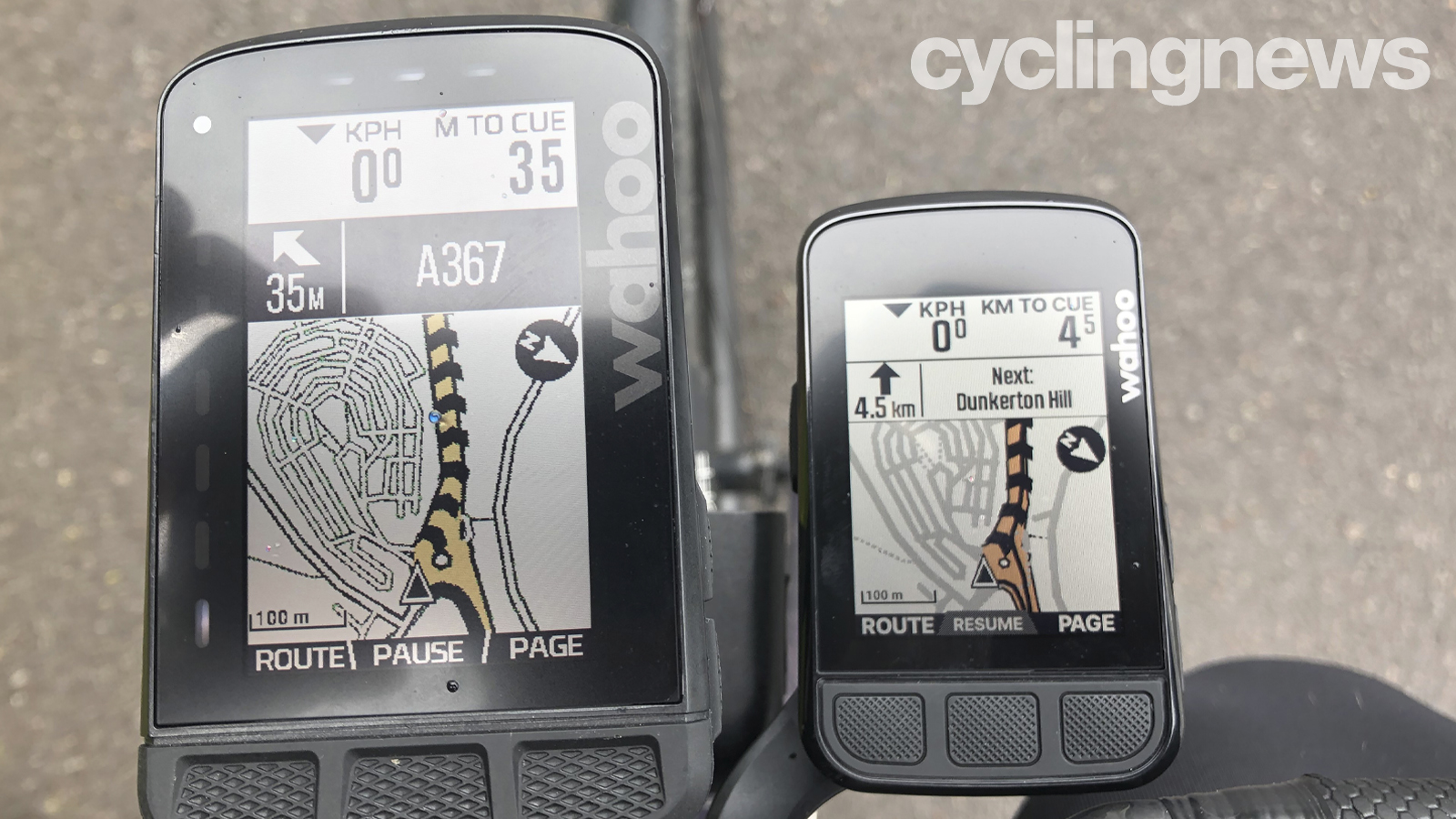
With an ever-so-slightly higher screen resolution, the Elemnt Bolt's display is certainly better in terms of its clarity but, in normal use, this is mostly offset by its reduced overall size.
However, while the Roam features just eight colours in its palette, the Bolt features 64. These colours are used sparingly throughout the device's display, so as not to be overbearing or in any way ugly.
The main benefactor of both colour and the increased resolution is the map screen, and despite the smaller size, the Bolt's map is clearer, easier to comprehend, and much less pixelated in appearance. However, by virtue of its smaller size, it does falter a little when it comes to providing directions onto roads with particularly long names. The text used is small enough to fit on screen, however, this is harder to read than the larger font used on the Roam.
And speaking of font, the text used for some menu items on the Bolt has changed from Wahoo's own font to what looks like a pseudo-Arial typeface. It's not necessarily a problem but it sticks out.
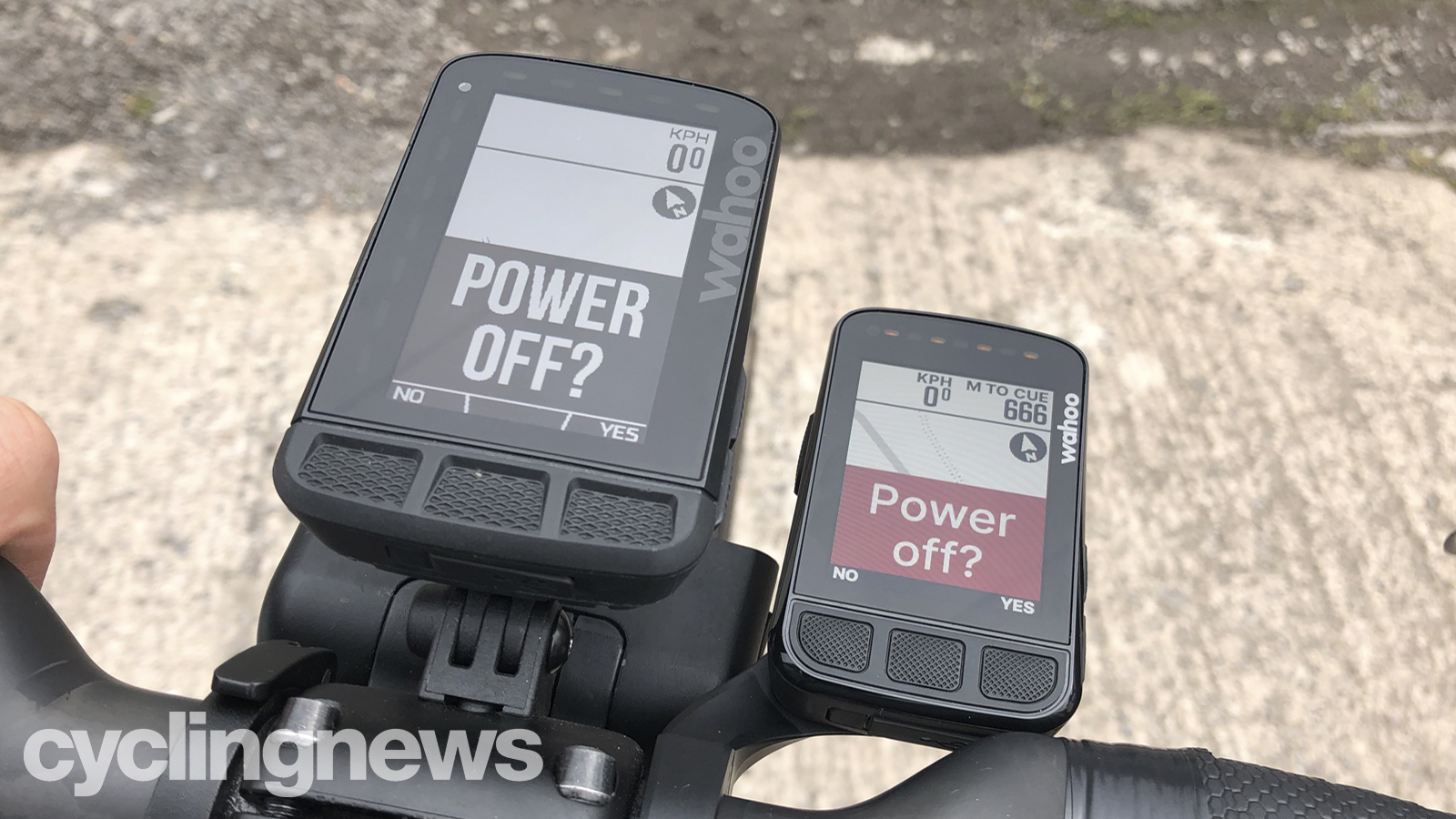
Another area where the colour is used is in the data fields for heart rate or power zones. Instead of simply displaying the number, it is now overlaid onto a coloured background that changes, highlighting which zone you are currently in.
And let's not forget the LED strips, which remain unchanged from the original Bolt and original Elemnt computers. The larger Roam gets two - across the top and down the left - while the smaller Bolt gets just one across the top.
Verdict: The Elemnt Bolt wins because, in spite of its diminutive size, it is a clearer display.
Setup and usability
Both the Elemnt Bolt and the Elemnt Roam are set up in the exact same way. Using the Elemnt app on your smartphone, you'll scan the QR code that appears on screen when you first power up the device, and once your account is set up, you can pair with various third-party apps such as Strava. If you've owned a Wahoo computer in the past, existing connections to those third-party apps will automatically apply to your new device.
In exceptional circumstances such as instances where non-standard maps are to be downloaded, I can envisage the Bolt's 16GB memory being beneficial here, as the 4GB memory of the Roam could mean extra time is required to delete unwanted maps. Of course, for most users, this is likely not going to present an issue.
When testing out the new Elemnt Bolt for an upcoming review, I timed how long it took to pair it with my phone and get it to a point that I could head out the door and start a ride. I benefited from already having the Elemnt app on my phone and having an account set up, but even still, the total time from box to ride-ready was one minute and 36 seconds.
When it comes to powering up your device, the Roam is slightly faster - seven seconds faster, in fact - taking 34.8 seconds to boot up compared to the Bolt's 42. However, the Bolt managed to find GPS quicker, so it's even. Also, when it comes to 'recovering' a ride - such as if you turned off the device at a mid-ride cafe stop - the Bolt is much faster.
In terms of usability, both offer a very similar interface, meaning that the user experience is predominantly equal.
The new Elemnt Bolt learns from the errors of its brother's ways, swapping out the buttons for slightly convex versions that are more tactile and easier to press, especially in thick gloves. However, while one of the reasons for new buttons was to prevent water collection (an apparent complaint on the Roam), in my experience so far the new shallower buttons actually collect water faster, albeit they do collect less in total.
Verdict: Since the setup, operating system and interface are largely the same, the Bolt is the winner thanks predominantly to the better, lighter, more tactile button presses.
Navigation
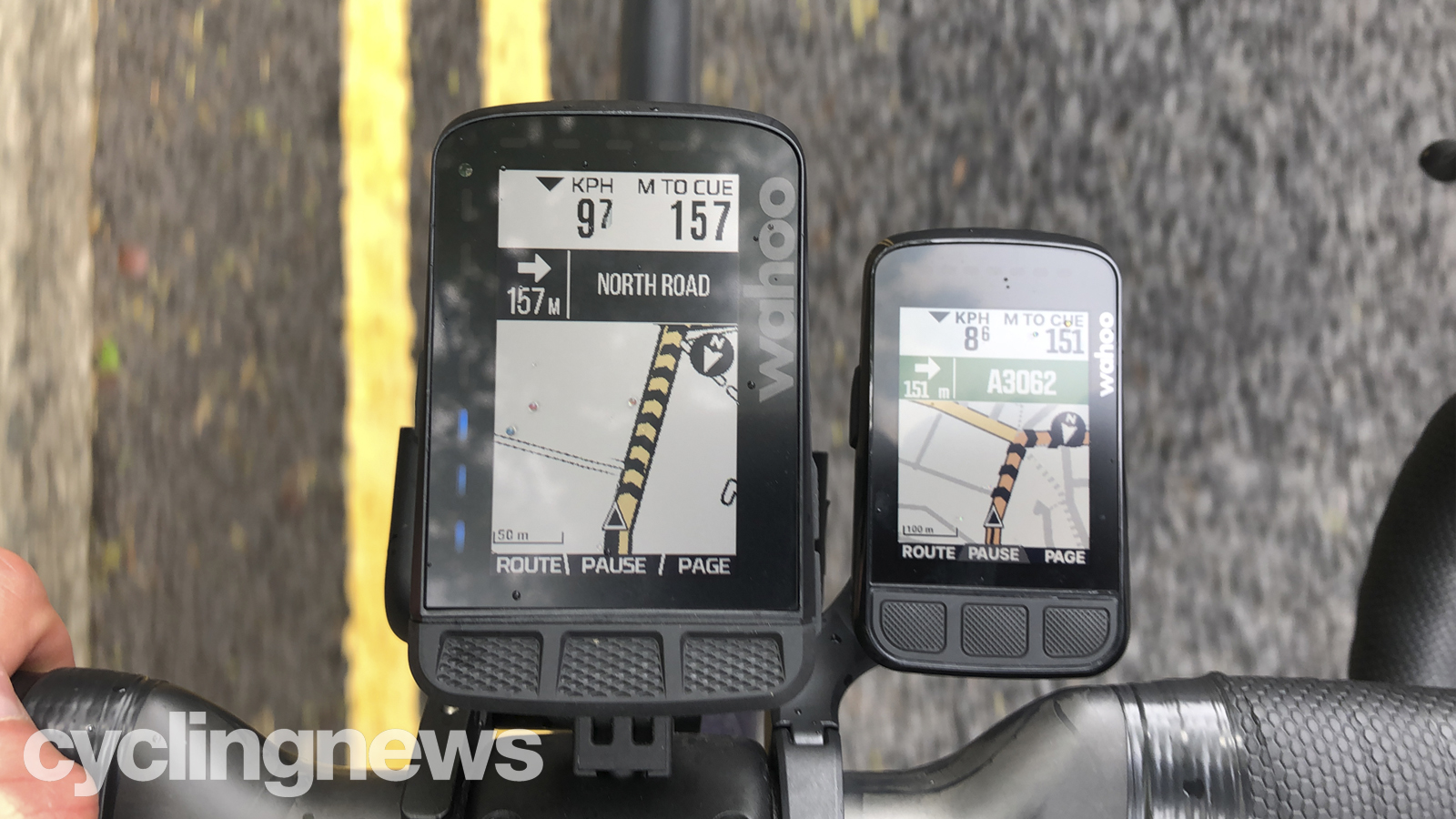
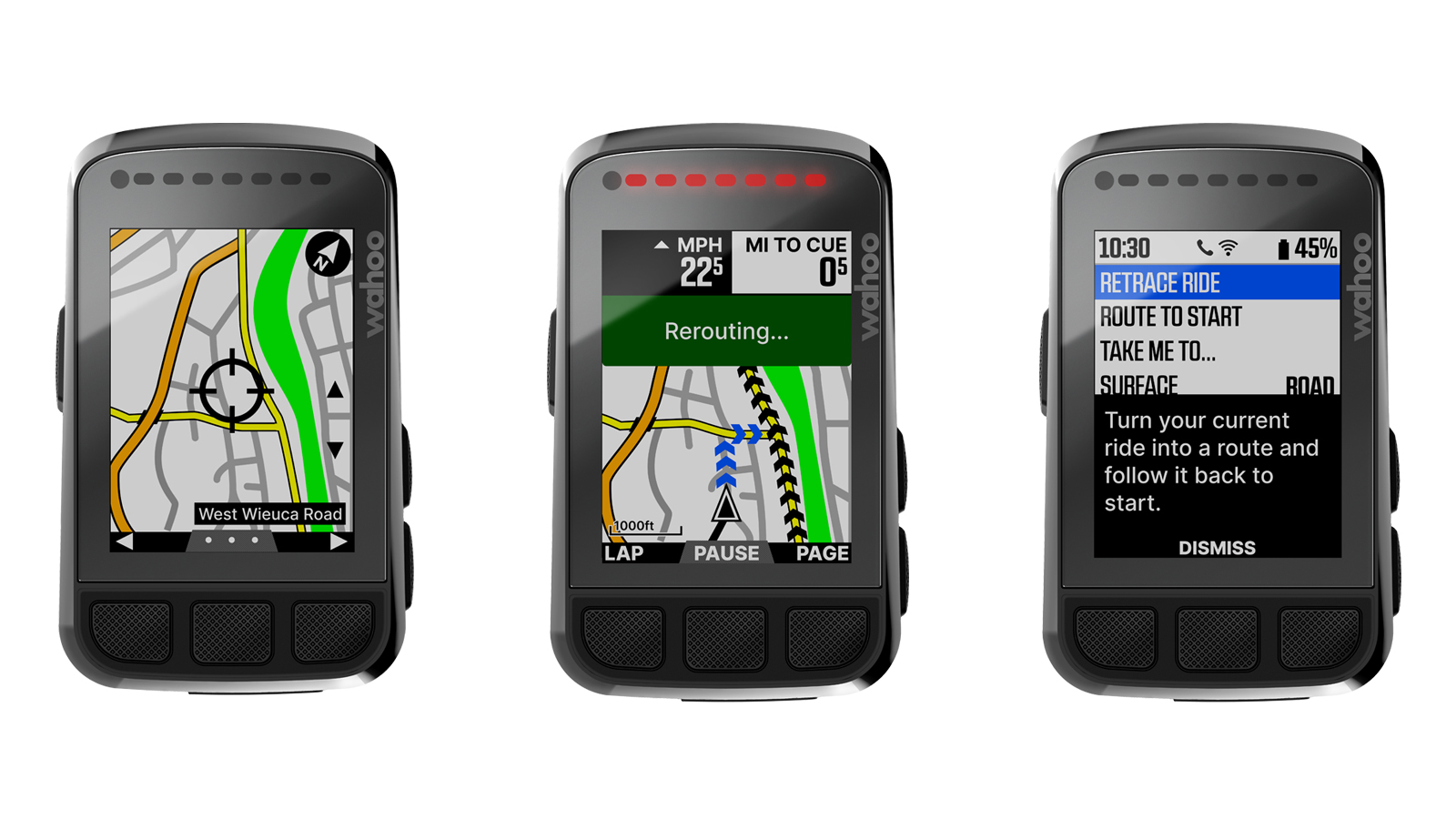
At the launch of the Roam back in 2019, the biggest development was the introduction of on-device routing functionality, enabling ‘Get Me Started’ and ‘Back On Track’, which takes riders to the start of a predetermined route and back to the route if a wrong turn is taken, respectively. Now since the Elemnt Bolt has finally caught up with that functionality, they are both back to even in this regard. However, there are still differences. Some are subtle, others not so much.
The expanded memory of the new Elemnt Bolt means it can hold 16GB to the Roam's 4GB, so it is able to store more maps, which will be good news for frequent travellers, but less pivotal to most users.
There's no denying that the larger screen has its benefits when it comes to mapping. Not least the greater surface area displayed, but more so for the navigational prompts, which can have larger fonts thanks to extra real estate.
As for the actual navigational capability of each device, I put them both to the test in a 30km route that looped around a city centre covering a selection of roads I don't know all too well. The route was scrambled together in Strava's route builder and as ever, getting the route onto each device was seamless.
Throughout the ride, I found that the Bolt provided navigational prompts ever so slightly earlier, but the Roam was never far behind, so both performed dutifully. When purposefully missing turnings, the Bolt - again - was consistently faster at re-routing, but the Roam quickly followed each time, and both supplied the same corrections.
A subtle difference is in the fact that the Bolt leaves a black line on the map of where you've been on your ride, so while this is unlikely to make any difference in a point-to-point ride, it proved beneficial on my multi-loop ride of unfamiliar roads.
On a couple of occasions, the dotted chevron line on both devices waited until I was right at a junction before providing the next direction. The grey line of the plotted route would usually supply the answer, but given my route passed through this junction three times, I was stumped. Luckily, the black line showed where I'd been and therefore, gave the answer to where I needed to go.
Verdict: The overall larger display of the Roam did make it possible to see more of your upcoming route, but the greater clarity of the Bolt equal things out on this front. And then in terms of the actual navigational performance, the earlier prompts and the where-you've-been black line meant that the Bolt edged ahead slightly.
Battery life
| Header Cell - Column 0 | Elemnt Bolt | Elemnt Roam |
|---|---|---|
| Battery size | 1600mAh | 2000mAh |
| Claimed battery life | 15 hours | 17 hours |
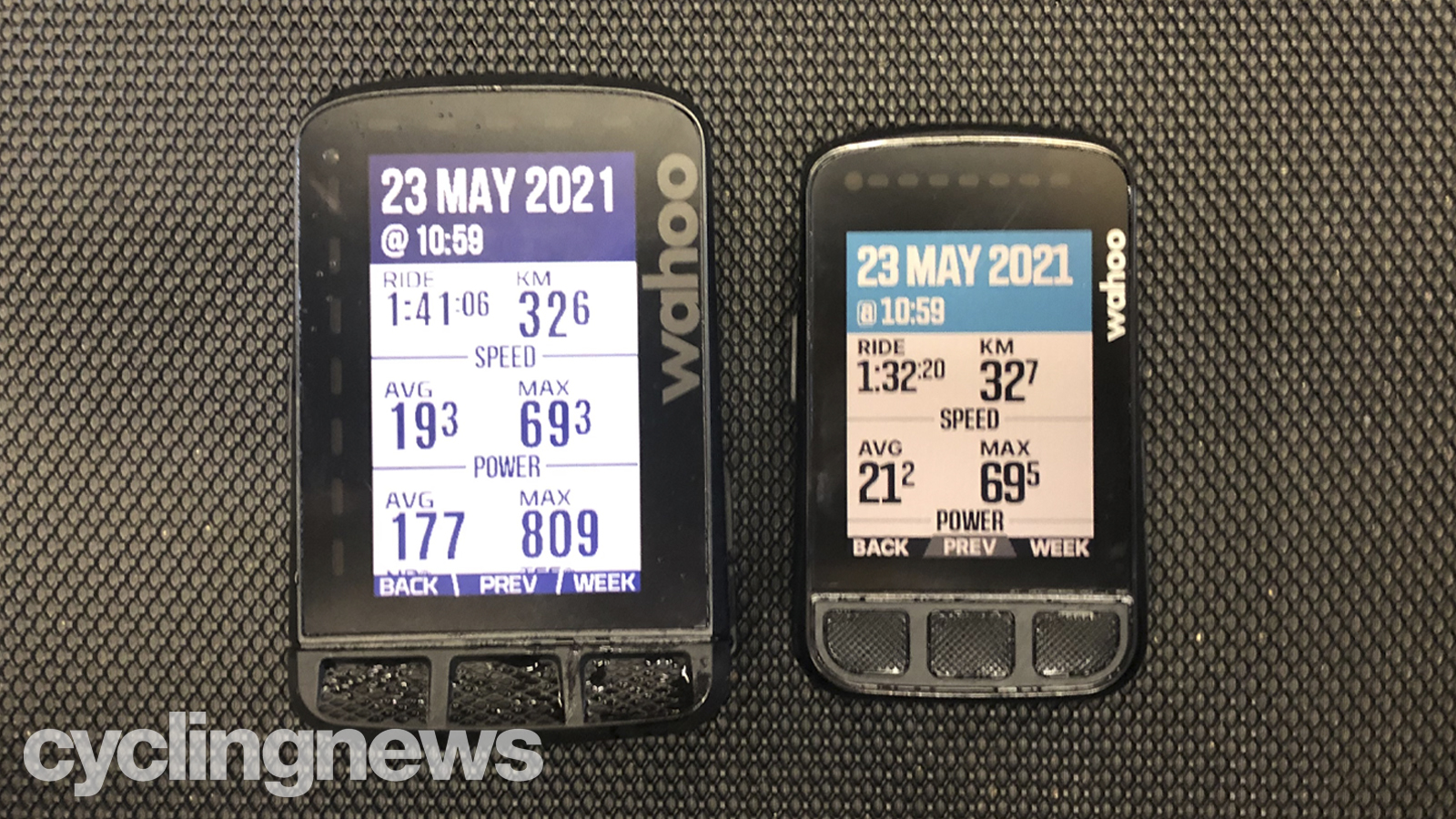
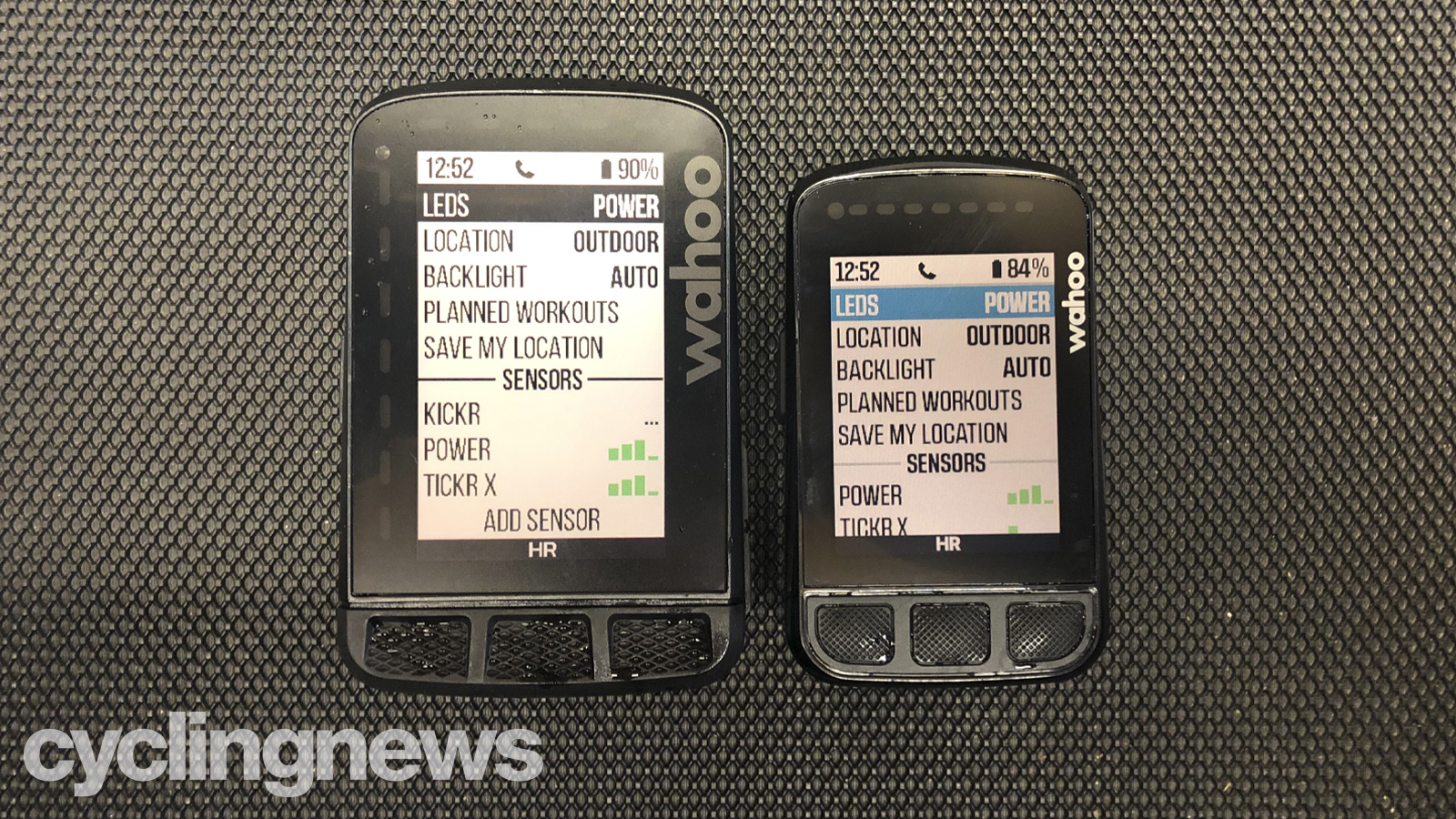
Thanks to its overall greater size, the Elemnt Roam is able to house a larger battery than the Roam, at 2000mAh versus the Bolt's 1600mAh. In turn, this means a greater battery life.
Wahoo claims 17 hours for the Roam, and 15 hours for the Bolt. For a recent ride, we ran the Bolt and Roam simultaneously, both with a heart rate monitor and power meter paired and the same route loaded. This 90-minute ride used 10 per cent of the Roam's battery and 16 per cent of the Bolt's, suggesting the rundown rate could actually be slightly higher on the Bolt but, since we've only had our hands on the Bolt for a few days prior to launch, more extensive testing will come as we prepare our full review.
Verdict: Wahoo's claims and our early testing suggests the Roam wins this round.
Charging
| Header Cell - Column 0 | Elemnt Bolt | Elemnt Roam |
|---|---|---|
| Full charge time | 1h 44m 17s | 1h 47m 08s |
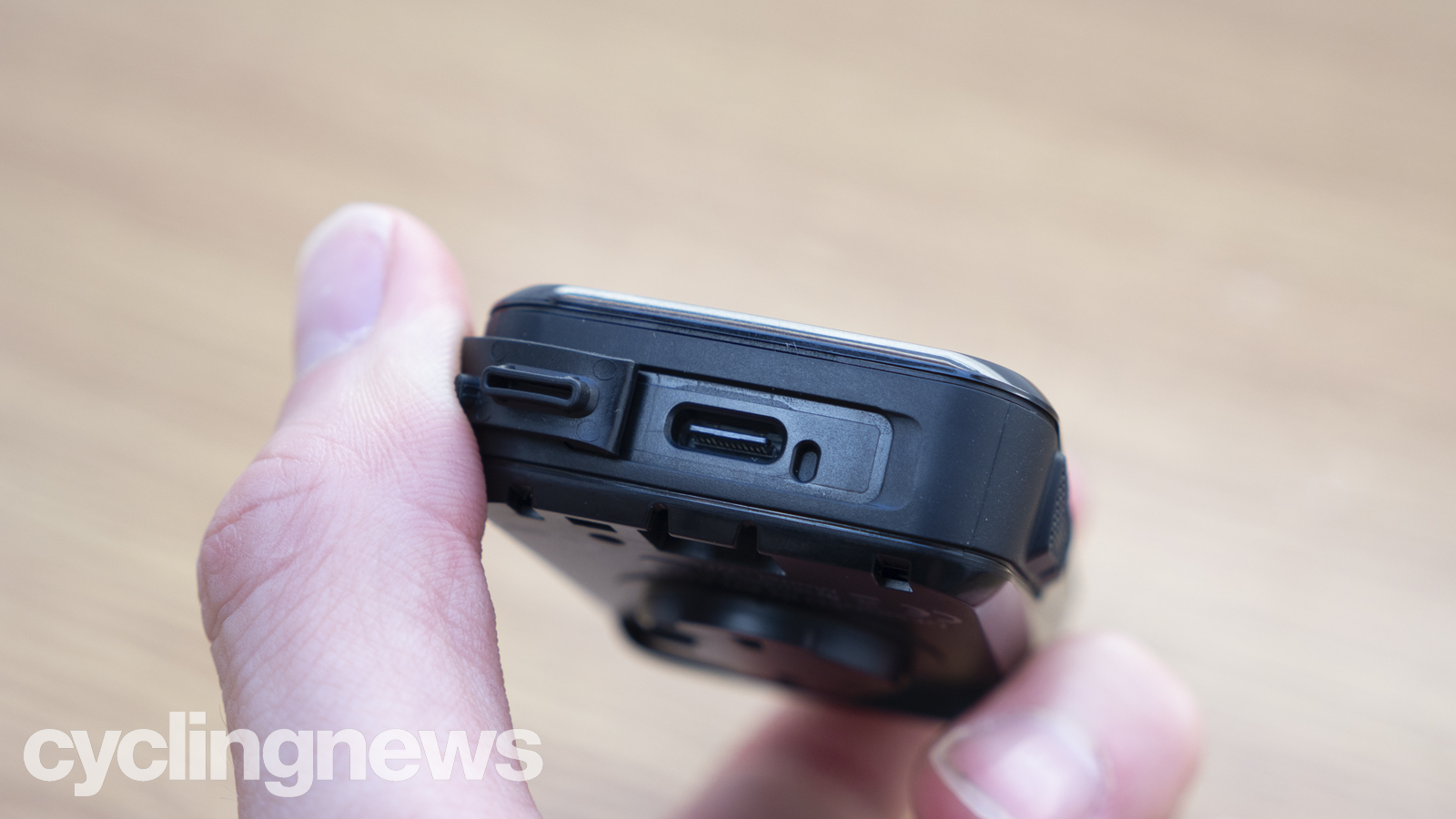
With the addition of a USB-C charging port, the Bolt is not only more resistant to water, but it also increases the charging speed from 1.5A to 5A.
In our test, the first 50 per cent of the Bolt's charge was completed at an extremely rapid rate while the Roam lagged behind at just 22 per cent.
However, the Bolt then slowed and the Roam caught up. By the time the Bolt had hit 100 per cent, the Roam was close behind at just 96. The total time to charge for both devices was around 1hr 45mins, which is especially surprising since the Roam's battery is bigger overall (2000mAh vs 1600mAh).
As for which is actually better, this depends on your needs. If you're looking for a complete charge in as fast a period of time as possible, then the Bolt wins… just. But since the Roam's bigger battery means you needn't charge it as often, and charge time isn't proportionately higher, the Roam is probably the better option overall.
However, in actuality, the only time you're going to care about charge speed is when you forgot to plug it in, and you only remember 15 minutes before your ride. In this instance, given the Bolt's 0-50% was completed considerably faster, then it's the Bolt that will allow you to squeeze as much life into it as possible while you get your kit on.
Verdict: We're going to give this one to the Bolt since the quick half-charge ability is definitely going to be appreciated one day when we forget to plug it in.
GPS
| Header Cell - Column 0 | Elemnt Bolt | Elemnt Roam |
|---|---|---|
| GPS supported | GPS, GLONASS, BEIDOU Galileo, and QZSS | GPS, GLONASS, BEIDOU Galileo, and QZSS |
When it comes to GPS, both the Elemnt Roam and the Elemnt Bolt support the same satellites: GPS, GLONASS, BEIDOU Galileo, and QZSS. Therefore theoretically, they should both track just as well as each other. However, in our testing so far, the Bolt has been considerably more accurate.
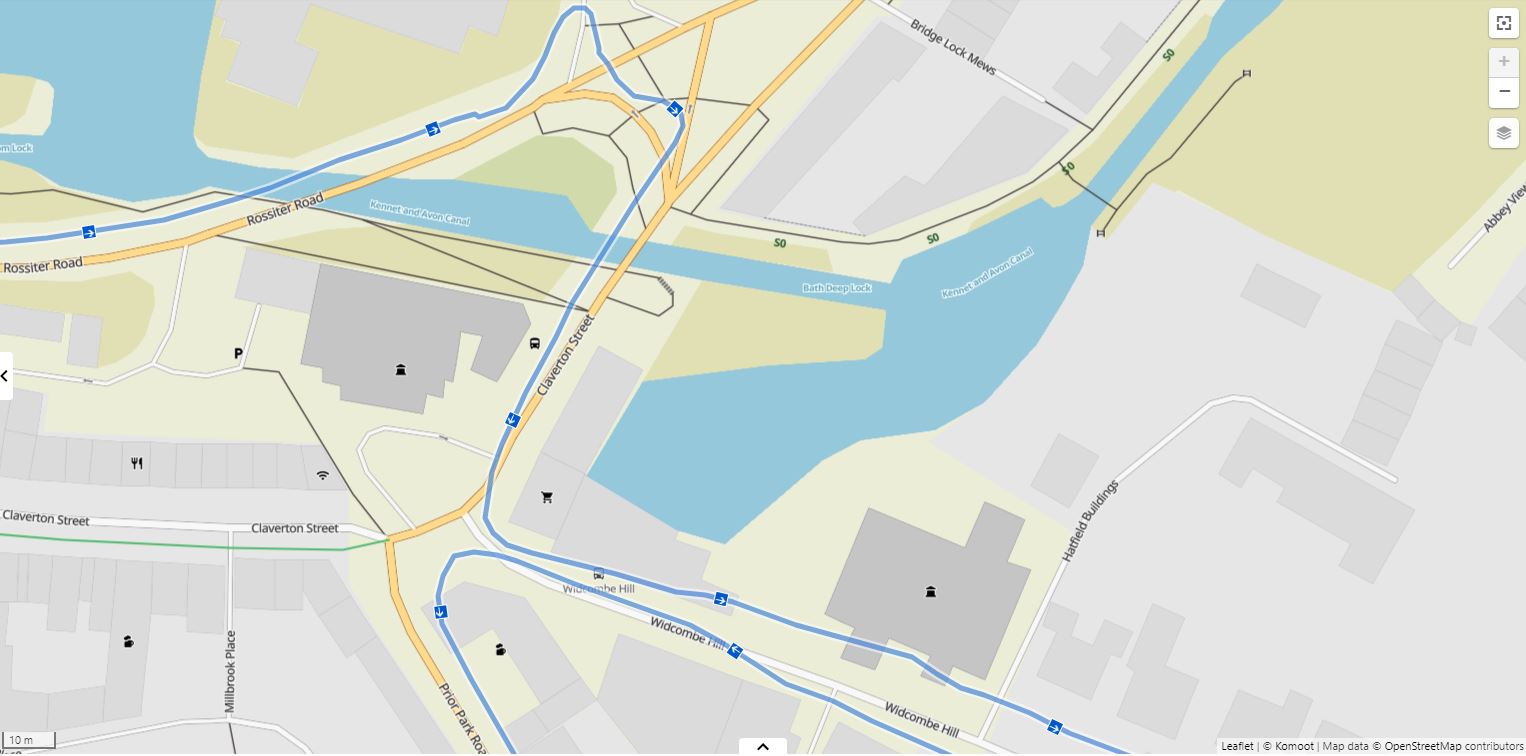
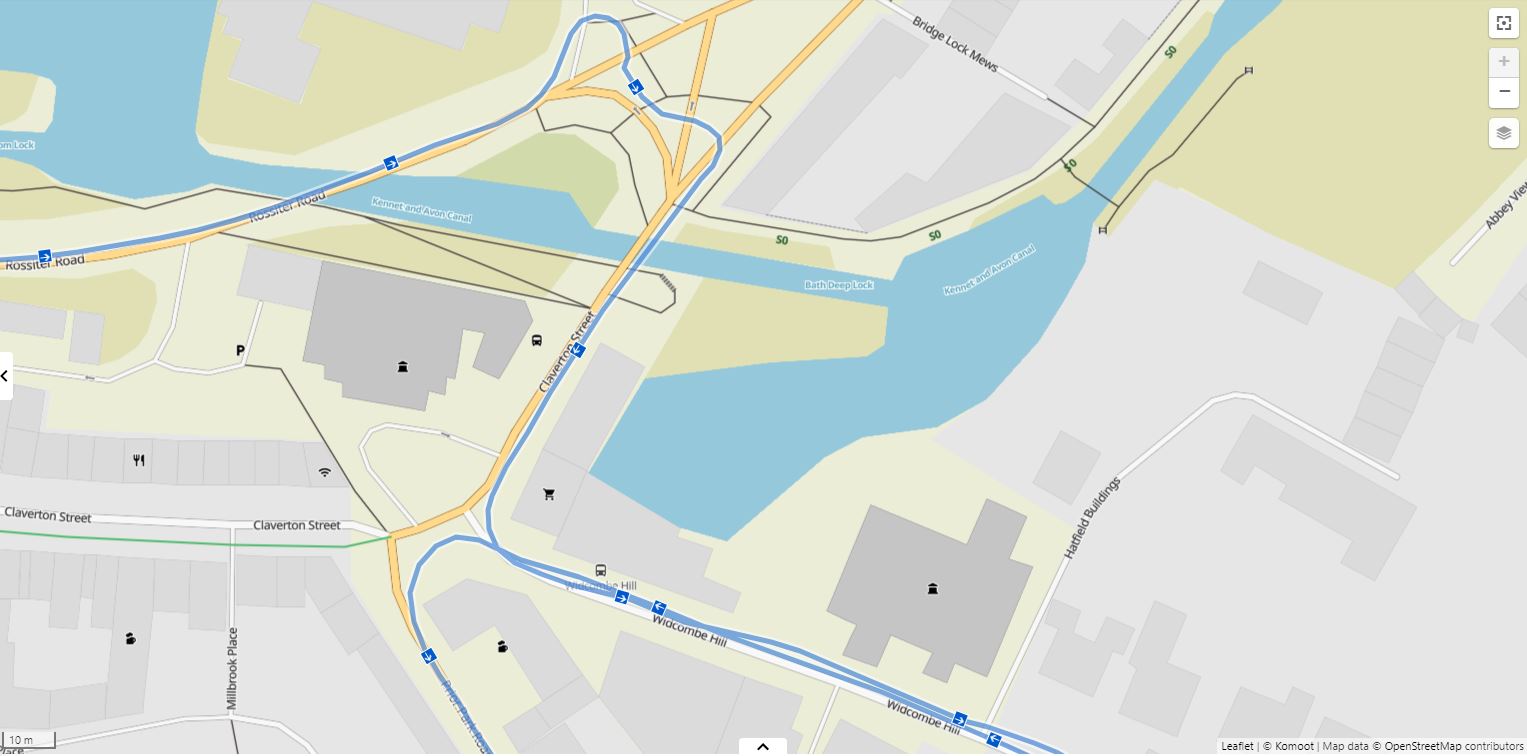
As you can see from the screen grabs above, the Bolt's route tracks the road much more closely than the Roam. The Roam has performed better than this in recent rides, and our testing has been limited to just a single ride so far, so more extensive testing will be done.
Verdict: Taking the result from our head-to-head test alone, the Bolt wins this one easily, but we know that the Roam was having an off day for whatever reason. We'll try again over multiple occasions in the coming weeks.
Price
| Header Cell - Column 0 | Elemnt Bolt | Elemnt Roam |
|---|---|---|
| Price | £249.99 / $279.99 / €279.99 / AU$419.95 / CA$379.99 / ¥35,000 | £299.99 / $379.99 / €349.99 / AU$599.95 / CA$549.99 / ¥46,000 |
The Elemnt Bolt has always been the slightly cheaper option in Wahoo's range, and the same trend continues with the new Elemnt Bolt.
Verdict: Easy, the Bolt wins this one.
Overall
The decision as to which is the better Elemnt computer will ultimately come down to your own preferences. If you total up the wins above, then the Bolt is the better computer and, in our opinion, it's the one we'd choose.
Of course, the Elemnt Roam still comes with a larger screen and larger battery, so if size matters or you're after maximum range for all-day epic adventures (or you often forget to charge it), then the Roam is the best Elemnt computer for you.
If you're after future-proofing, then the addition of hardware such as the USB-C charging port, 64 colour screen, and integration of an accelerometer - which doesn't actually do anything at the moment, but is there to enable future development - will appeal.

Josh is Associate Editor of Cyclingnews – leading our content on the best bikes, kit and the latest breaking tech stories from the pro peloton. He has been with us since the summer of 2019 and throughout that time he's covered everything from buyer's guides and deals to the latest tech news and reviews.
On the bike, Josh has been riding and racing for over 15 years. He started out racing cross country in his teens back when 26-inch wheels and triple chainsets were still mainstream, but he found favour in road racing in his early 20s, racing at a local and national level for Somerset-based Team Tor 2000. These days he rides indoors for convenience and fitness, and outdoors for fun on road, gravel, 'cross and cross-country bikes, the latter usually with his two dogs in tow.